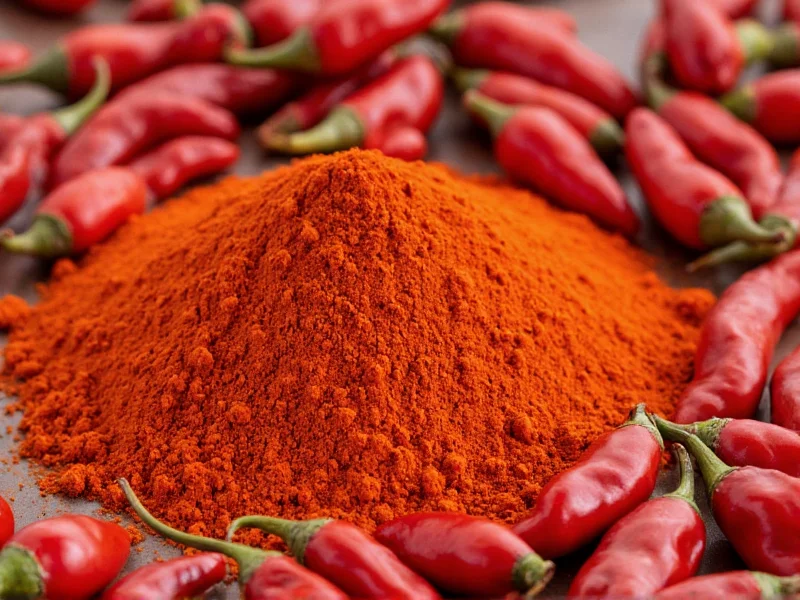Understanding what is chile powder requires distinguishing it from similar spice blends and recognizing its culinary significance. Unlike single-origin spice powders, authentic chile powder represents a carefully balanced combination that delivers complex flavor rather than just heat. The term "chile" (pronounced "chill-ay") refers specifically to the fruit of the Capsicum plant native to the Americas, differentiating it from "chili" which often denotes the complete spice blend.
Composition and Varieties of Chile Powder
True chile powder consists solely of dried, ground chiles, though many commercial products labeled as such actually contain additional ingredients. The specific chile varieties used determine the powder's flavor profile, heat level, and color:
| Chile Variety | Heat Level (Scoville) | Flavor Profile | Common Uses |
|---|---|---|---|
| Ancho (dried poblano) | 1,000-2,000 | Fruity, raisin-like, mild | Mole sauces, enchiladas |
| Guajillo | 2,500-5,000 | Berry-like, tangy, medium heat | Salsas, marinades, stews |
| Chipotle (dried jalapeño) | 2,500-8,000 | Smoky, earthy, medium heat | Barbecue, beans, adobo sauce |
| Arbol | 15,000-30,000 | Sharp, nutty, hot | Salsas, hot sauces, seasoning blends |
Distinguishing Chile Powder from Chili Powder
One of the most common points of confusion involves the difference between chile powder and chili powder. While these terms are often used interchangeably, they represent distinct products:
Authentic chile powder contains only ground dried chiles, preserving the pure essence of the specific pepper variety. In contrast, chili powder (with an "i") typically refers to a seasoning blend that includes ground chiles plus additional spices such as cumin, garlic powder, onion powder, and oregano. This distinction matters significantly when following traditional recipes that specify one or the other.
When shopping for pure chile powder, check the ingredient list carefully. Products labeled simply "chile powder" should contain only chiles, while those with multiple ingredients are technically chili seasoning blends. This knowledge helps home cooks achieve authentic flavors when preparing traditional Mexican dishes like mole, adobo, or enchilada sauces.
Culinary Applications and Flavor Development
Professional chefs understand what gives chile powder its distinctive flavor comes from proper preparation techniques. Toasting dried chiles before grinding releases essential oils and develops deeper, more complex flavors through the Maillard reaction. This process transforms raw, one-dimensional heat into nuanced, aromatic seasoning.
When incorporating chile powder into dishes, consider these professional techniques:
- Bloom chile powder in hot oil to maximize flavor extraction
- Add early in cooking for deeper integration or later for brighter notes
- Combine with acidic ingredients like lime juice to balance heat
- Pair with complementary spices like cumin for authentic Mexican profiles
For traditional mole recipes, the specific blend of chiles creates the sauce's signature complexity. Ancho provides fruitiness, mulato contributes chocolate notes, and pasilla adds earthiness. Understanding these flavor contributions helps cooks select appropriate chile powders for specific applications rather than relying solely on heat level.
Selecting and Storing Quality Chile Powder
Freshness dramatically impacts the quality of chile powder. Properly stored, pure chile powder maintains optimal flavor for 6-12 months, while blends with additional spices may degrade more quickly. Look for vibrant color and a strong, clean aroma when purchasing.
To maximize shelf life:
- Store in airtight containers away from light and heat
- Refrigerate for extended storage (up to 18 months)
- Check for fading color or musty odors indicating degradation
- Buy from reputable sources that specify chile varieties used
For the most authentic experience, consider making your own chile powder by toasting and grinding dried chiles. This approach ensures freshness and allows customization of heat levels and flavor profiles based on specific recipe requirements.
Common Misconceptions About Chile Powder
Several misconceptions surround chile powder that affect how cooks use it. Many believe all chile powders are extremely hot, when in reality varieties like ancho and pasilla offer rich flavor with minimal heat. Others assume commercial "chili powder" equals authentic chile powder, leading to flavor imbalances in traditional recipes.
Understanding regional variations matters too. In New Mexico, "chile powder" typically refers to pure ground red chiles from local varieties, while in other regions it may indicate a spice blend. This regional specificity explains why recipes sometimes yield inconsistent results when cooks don't account for these differences.











 浙公网安备
33010002000092号
浙公网安备
33010002000092号 浙B2-20120091-4
浙B2-20120091-4